Recommended Listening: Drift through the cosmos while you read – let the ethereal soundscape carry you through this cosmic journey. Trust me – these wallpapers hit differently with the right soundtrack flowing through your headphones. Here is my favorite pairing for this article.
There’s something profoundly humbling about searching for the perfect cosmic wallpaper. You begin with grand ambitions – wanting to capture the moon’s ethereal glow, the majesty of distant planets, perhaps even the birth of stars themselves. Yet reality quickly sets in: the universe, it seems, doesn’t photograph well from our tiny corner of existence. Most images of deep space arrive blurred by distance and time, their beauty lost in translation through telescopes and sensors.
After days of scrolling through disappointingly fuzzy nebulae and pixelated planets, I made a decision that changed everything: why limit myself to photographs alone? Once I opened my search to include 3D renders and artistic interpretations, the cosmos suddenly revealed itself in all its intended glory. What follows are the fifteen most breathtaking cosmic wallpapers I discovered – each one capable of transforming your desktop into a window to the infinite.
The Collection
1. SpaceX’s Celestial Brushstrokes
These aren’t just photographs – they’re time itself made visible. SpaceX captured these images using extended exposure during rocket launches, and the result is nothing short of magical. The luminous trails carved across the darkness transform mechanical precision into pure artistry. Every glance at your monitor becomes a reminder that we’re living in an age where humanity paints the sky with fire and ambition.


2. Jupiter’s Regal Portrait
Among all the gas giants in our solar system, Jupiter reigns supreme – and this single image captures exactly why. After diving deep into Astrum’s fascinating documentaries, I’ve developed a particular fondness for this stormy monarch of planets. Its swirling atmosphere, rendered in this wallpaper with exceptional clarity, makes it impossible not to pause and marvel at nature’s own abstract art.
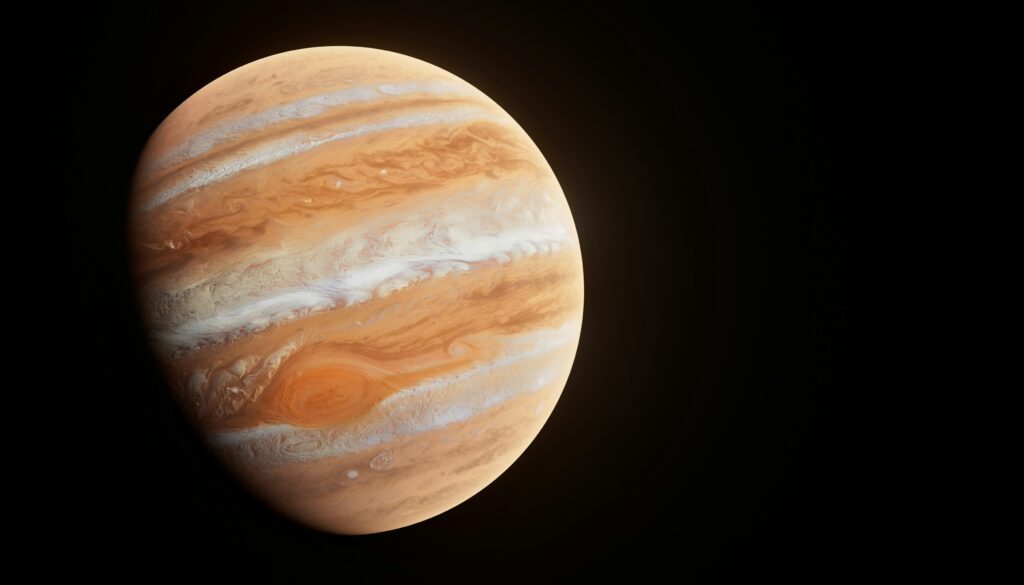
3. The Ring World Fantasy
No, this isn’t Saturn – it’s something even more extraordinary. This 3D render imagines a world with rings that stretch impossibly far, creating a composition that comes alive when spread across your monitor. The artist’s choice of backdrop – a star-studded canvas that seems to breathe without alot of color – elevates this from mere wallpaper to desktop art.

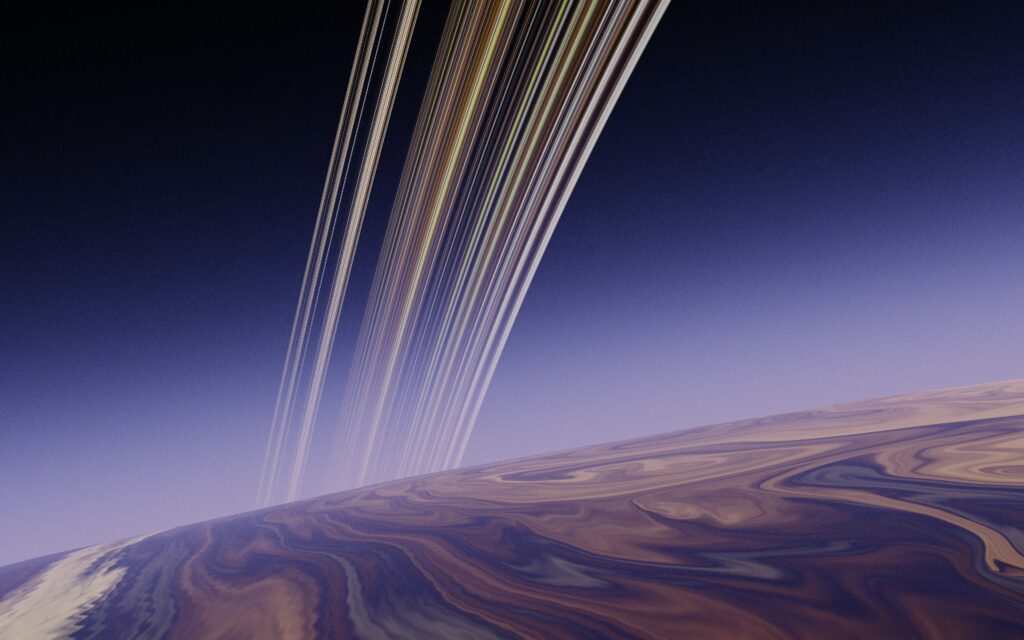
4. Abstract Cosmic Dreams
Sometimes the essence of space is better captured through interpretation than documentation. These abstract paintings distill the cosmic experience into pure emotion and color, achieving that ineffable “cosmos vibe” that photographs often struggle to convey. They remind us that space isn’t just a place – it’s a feeling.

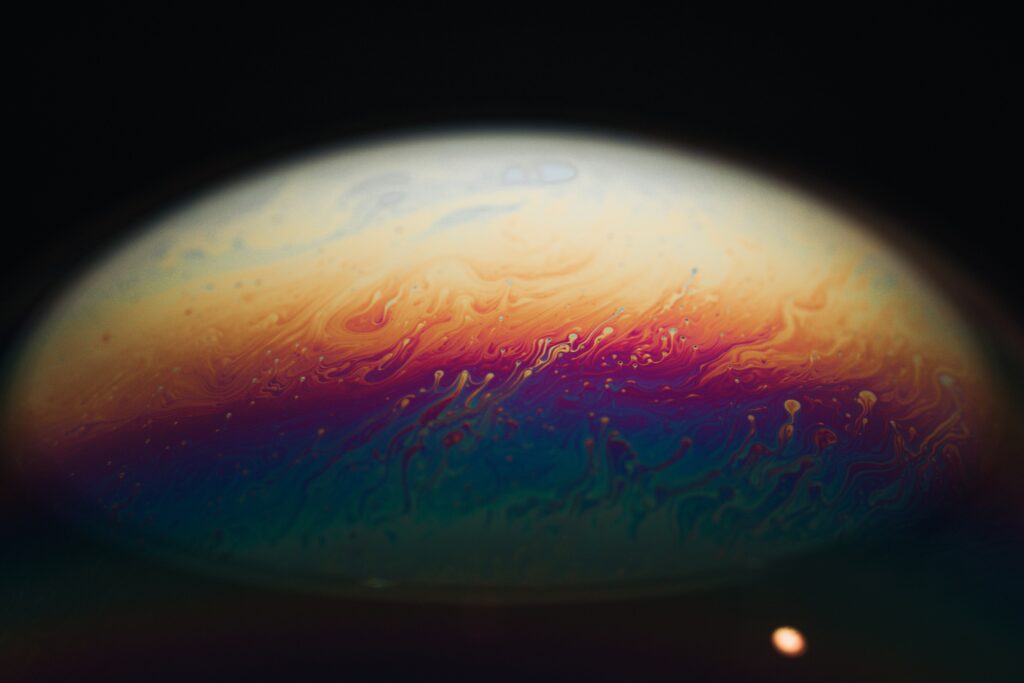
5. Saturn Reimagined
Finding the perfect Saturn wallpaper proved surprisingly challenging. I wanted something that celebrated both the planet’s iconic rings and its subtle beauty as a gas giant. These artistic interpretations succeed where photographs fail, balancing scientific accuracy with aesthetic wonder.
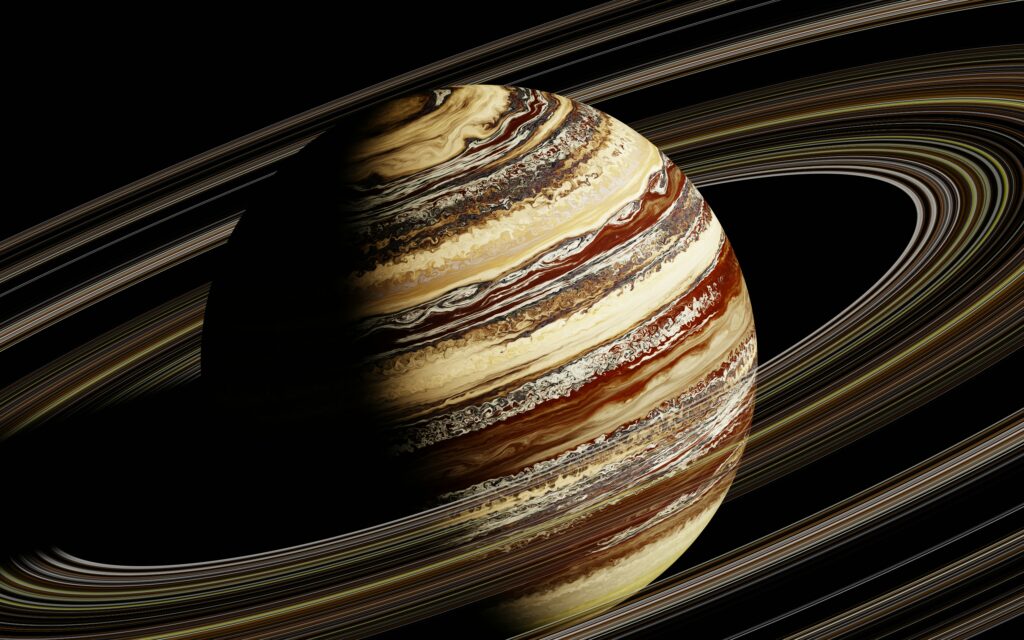
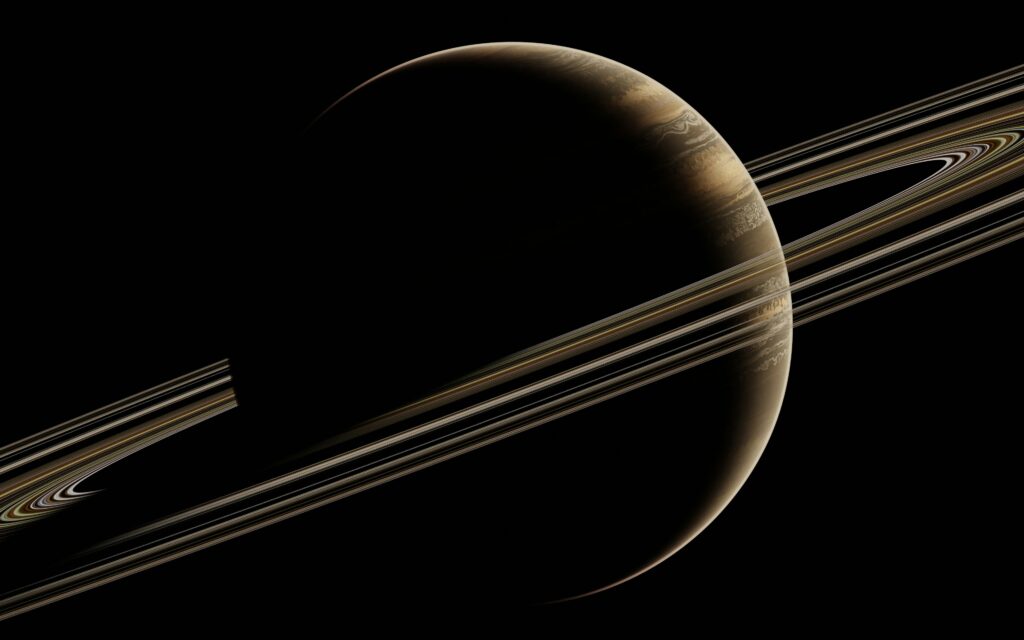
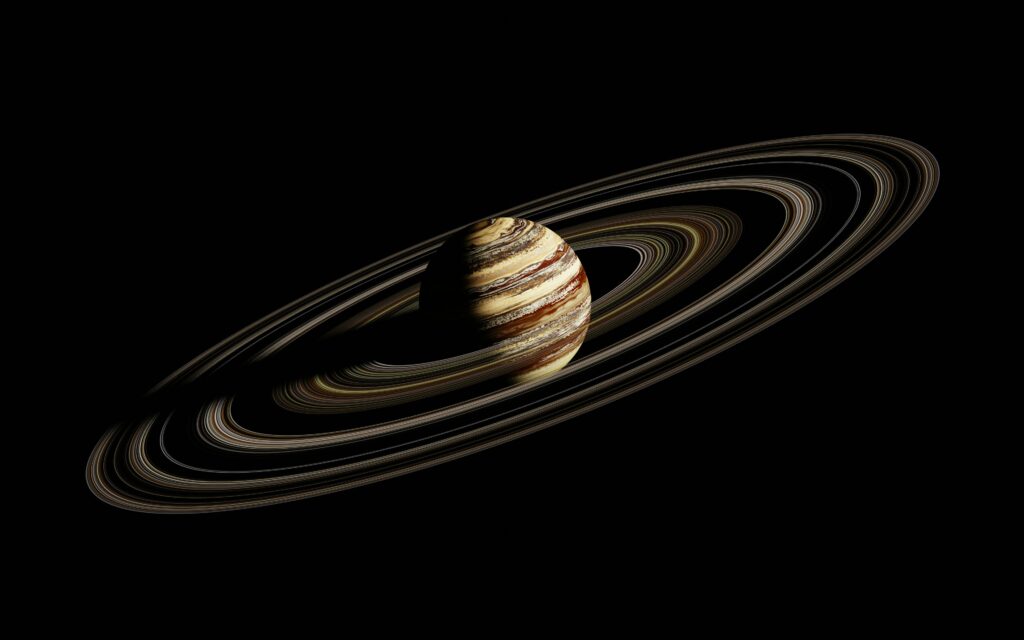
6. The Blue Mystery
While this celestial body exists only in the imagination of a 3D artist, it captures something profound about our cosmic yearning. With its Neptune-like azure depths, accompanying moon, and ethereal atmospheric halo, it’s a reminder that sometimes fiction can feel more real than reality. The cosmic void behind it – deep, dark, and scattered with distant stars – might be the most beautiful backdrop in this entire collection.
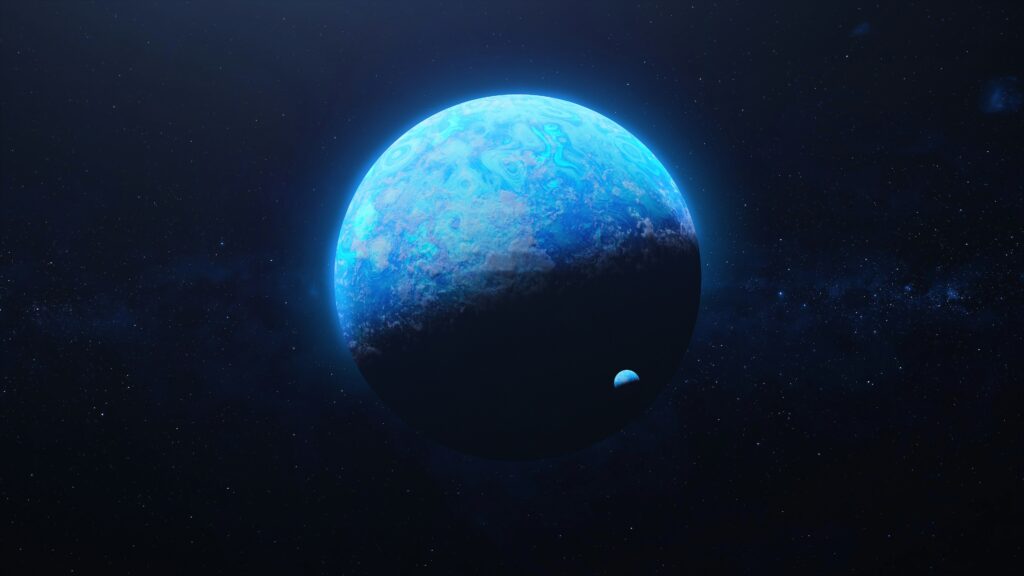
7. Elementary OS’s Masterpiece
Some wallpapers stop you in your tracks. When I first encountered this image on Elementary OS, I knew I’d found something special. The composition – a SpaceX satellite suspended against Earth’s blues and greens – transforms technology into poetry. It’s a perfect marriage of human achievement and natural beauty.

8. Earth’s Portrait
There’s something eternally moving about seeing our home from space. This stunning capture reminds us that every sunset, every ocean wave, every mountain peak we’ve ever known exists on this singular blue marble floating in the cosmic dark.

9. Cosmic Violence
I craved something that captured the universe’s raw power, and this image – despite its imperfect resolution – delivers. Likely depicting a quasar captured by the Hubble Space Telescope, it shows us that beauty in space isn’t always serene. Sometimes it’s violent, energetic, and overwhelming. Perhaps someday AI upscaling will restore this image to its full glory, but even now, it commands attention.
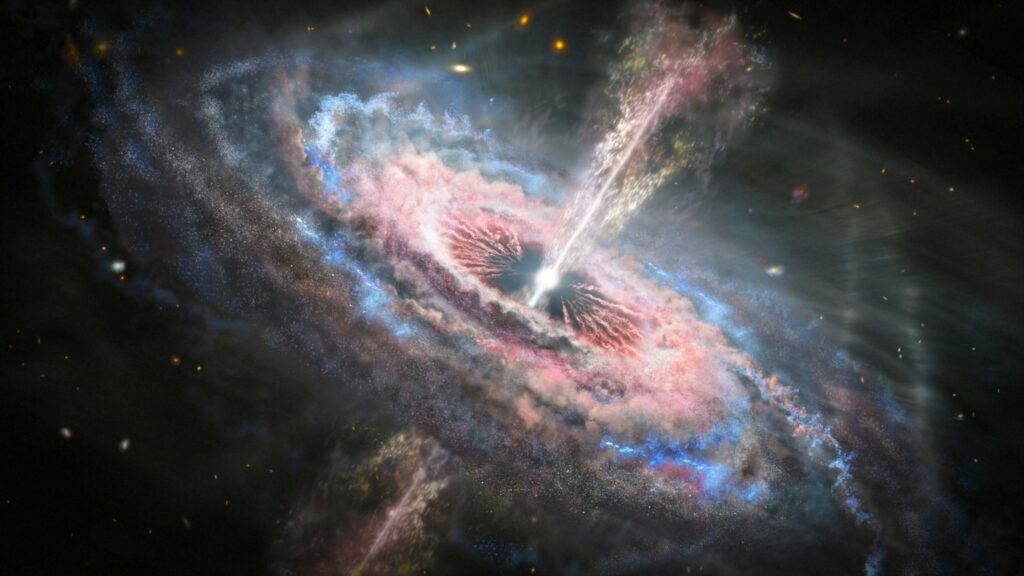
10. Night’s Gentle Embrace
After the fury of a quasar, this serene capture of our night sky provides the perfect denouement. It reminds us that the cosmos isn’t just “out there” – it’s here, above us every night, waiting for us to look up and wonder.

Curating this collection has been a journey of discovery, disappointment, and ultimately, delight. Each wallpaper represents not just an image, but a different way of seeing our place in the universe. Whether you choose the violent beauty of a quasar or the serene rings of an imagined world, may your desktop become a daily reminder of the infinite wonders that surround our small, precious planet.
Happy stargazing, fellow cosmic wanderers.